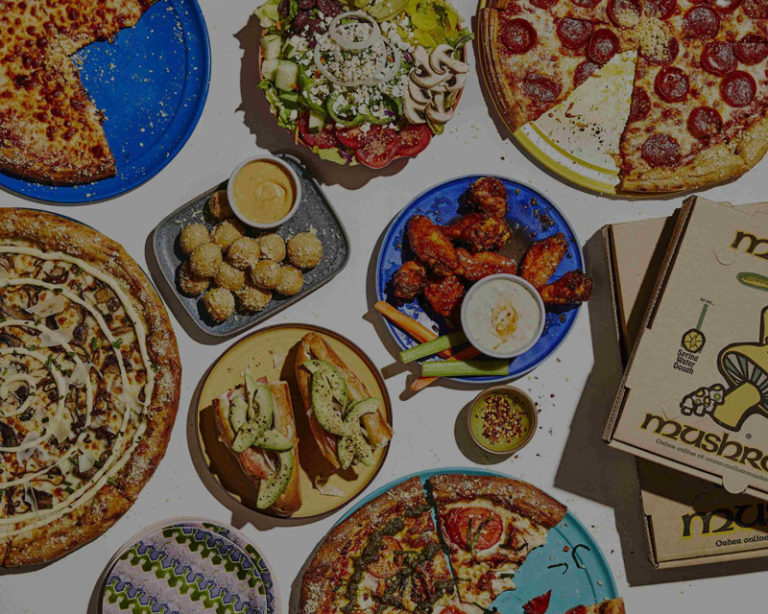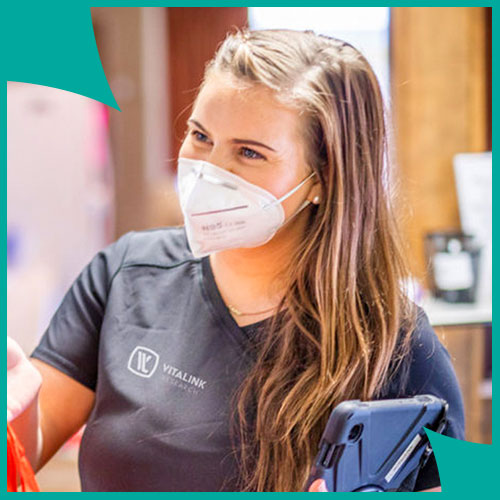Practical Advice for Naming Your Brand
There are few things more challenging throughout the branding process than naming a business or product. It takes condensing a mountain of information into a few words that perfectly capture a brand that accurately encompasses who you are, and meanwhile acts as the first impression your brand will hold onto forever. It’s the thing that needs to stick right away, because if it doesn’t, it will leave you starting at a disadvantage. Daunting, right?
One of the most important steps is choosing a name. And when it comes to this decision, some brands are lucky enough to have a great name that naturally makes sense. Occasionally, using a creator’s name, a city reference, or a piece of industry lingo appropriately falls into your lap and perfectly fits the bill. That’s great. Congratulations, if that’s the case.
But, a majority of the time, once a product or brand starts to take shape, finding the perfect name can pose a more significant challenge.
While honing in on your name, there are a few factors worth considering to help you find the one that best suits you.
Clever names lose novelty.
A pun or gimmicky name may feel fun, but can easily grow tired for both you and potential customers. The fried chicken restaurant named “Fry Me to The Moon,” or dog groomer called “Indiana Bones” might seem playful at first, but will likely grow old fast as the novelty wears off. Instead, choose a name you can grow with: one that represents you in the way you want to be seen, and gives at least some insight into what you’re offering.
Your name should be smart. It should also be fun, if that’s what you’re after. But, don’t let getting caught up in cleverness distract from what you do.
Practicality should be a guide, not an obstacle.
When you start from scratch with naming, it can be tempting to go the route of simply choosing what’s available based on domains and social handles. Those are important factors to consider, but availability shouldn’t dictate your name.
If you settle on a name you love, and the obvious domain or handle has already been claimed, use this “setback” as an opportunity for creativity. Harley Davidson’s stock ticker symbol, for example, is ‘HOG’ because Home Depot already had the obvious choice of ‘HD’. Not only is this perfectly brand appropriate, it demands more attention thanks to a touch of well placed creativity. Move a little outside the box when necessary and make implementing the right name a priority.
Brainstorm. A lot.
Word association is a fantastic exercise for naming purposes. You’ll often find that even simply writing about your brand will open up your naming possibilities.
Ask yourself “What does my brand do/create?” and write down every word you can think of around those ideas. Then visit the thesaurus (or anagram tool, or translating service) to see what else appears. You may be surprised by what comes out of the exercise.
Trends die. Good names stick around.
You probably have a “designer” friend on social media who started something called “Rosemary & Birch” or some other combination of flowers and woodland animals with an ampersand dividing them. This is not a bad brand name. But it is a trendy, mostly meaningless one. It does not give potential customers any insight to what you do, can be easily ignored in a sea of sameness, and does no work on behalf of your brand to attract business.
While it’s okay to choose a name that fits with popular culture, consider how well the name will age. Not only is it unlikely to be the best name for you, it will date your brand with all the other trend followers that started brands around the same time. Picking a name solely for its trend value will drag you down and cause you to stand out less in the long term.
Say what your brand does. Or don’t. But, maybe.
This ambiguous piece of advice has a point. There’s no magic formula for naming your brand. Sometimes, the no frills dive bar on First Avenue should just be called the “First Avenue Pub.” Sometimes, calling it “Dr. McManimum’s Drink Emporium” will work better. There’s a different fit for everyone, which is why the experimentation and exploration phase of naming is so important. What matters most is giving your brand a name that is memorable, helps tell your story, and remains relevant as your business grows.
Brand naming in action.
My agency helped name JumpSpark, a Jewish teen group previously called “The Atlanta Jewish Teen Initiative.” Obviously, the original name is not a bad one. It defines who this group is for, their affiliation, and gives you a quick idea of who they are without the need for explanation. But for a Jewish teen organization aimed at getting adolescents involved in the community and excited about their faith and culture, “Atlanta Jewish Teen Initiative” was a mouthful that wouldn’t exactly bring the young folks in droves.
To start the naming process, we spent time with program leaders and participants, went through a branding workshop with them, and brainstormed together — both separately as an agency and in collaboration with our client.
Finally landing on the name JumpSpark took a significant amount of time and work, but it clicked almost instantly as an obvious fit once we found it. A “jump spark” is defined as “a spark produced by the jumping of electricity across a gap.” It’s a connection. A conduit for something much larger. And that’s exactly what the organization does — linking Jewish teens with their community, and filling in gaps that can spread opportunities to grow.
“JumpSpark” is a successful name for a few reasons:
-It’s short and punchy: a nice departure from the clunky previous name.
-It’s easy to remember and will stick with people after hearing it.
-It has a story that connects to what the brand does, and can be quickly explained if asked.
-It’s smart without going over anyone’s head and clever without relying on a puns or gimmicks.
Your ideal name is unique to your business, and the goal is to find one you can stand behind with confidence. Give yourself time to explore and sit with your options. Experiment. Share and test it out with others. Go outside of the box. Don’t hitch your wagon to what others are doing. Make it unique, but definitive. And finally, it may sound corny, but have fun.
This is your brand. It’s going to grow and evolve with you and should be something you truly love. Take time to enjoy and embrace the process even if it feels long and arduous. You and your brand will appreciate the effort in the long run.
Converting Your Clients Into Salespeople (So They Can Sell Your Work For …
Let’s face it: Great creative work often gets derailed because a key stakeholder who you’ve never met doesn’t get it or just really never liked the color orange. I’m not talking about agencies pushing self-indulgent conceptual flourishes that feed our own egos and win us awards. I’m talking about bold creative concepts that your best research and expertise tell you will indeed support your client’s goals — if only your client’s stakeholders will believe in them enough to step outside their comfort zones.
In almost any organization, there are layers of decision-makers with the power to veto your ideas. However, you often won’t be in the meetings where your concepts are presented to these stakeholders, and you’re likely not even the best person to present them. It’s all on your client to present your work, explain your thinking and make the case for why they should approve it.
Preparing your clients to sell your concepts is the difference between getting 80%-90% of your best, boldest ideas approved and getting only 50% of them approved. Here’s how my agency gets the green light from stakeholders for our most daring approaches.
Know Your Audiences
My agency did a rebrand and new digital experience platform (DXP) for an agricultural, state-funded college founded in 1908 in Georgia. Our client was the college’s CIO. After interviewing key stakeholders during discovery, we knew we had to celebrate the college’s long history while evolving its brand to work better in the digital age. So we visited the archives in the school’s library, scanning yearbooks, farmer’s guides from the ’40s, and newspapers from throughout the college’s history.
To prepare the CIO to present the new brand, we developed a presentation deck that included some of the scanned archival material and talking points explaining how the college’s history had inspired the new brand. For example, the new font was ADA-compliant, legible at small sizes, and had a flexible web font available. But we pointed out that it was created the same year as the college, and we included scans of century-old print materials that had used it.
Takeaways:
Identify all stakeholders who will influence the decision. Ask your client who else in the organization’s hierarchy will weigh in on the final decision. Ask also if there is a broader community whose opinions will be influential.
Include them in the discovery process. Invite those stakeholders into your initial discovery workshops or interview them. Ask about their goals, values and priorities.
Genuinely reflect their opinions in the work. You already create work to connect with target audiences. Treat stakeholders as additional audiences, creating work that they’ll connect with too.
Help Them See What You See
When the general manager of a residential resort came to us for a rebrand, we included the homeowner’s association (HOA) in our discovery workshops. We asked for their input and got their buy-in on the long-term goals the new brand would support.
As the time approached for the general manager to present the new brand, we sent a photographer to capture beautiful images of the community, including all existing signage. We edited these photos to show how the proposed new brand would actually look in their community, then included them in a presentation deck with talking points that referenced the goals they had agreed upon.
Takeaways:
Go the extra mile with mock-ups. As creative professionals, we’re good at imagining experiences we haven’t yet created. Stakeholders may need help to do the same. Equip your client with mock-ups that bring the proposed experience to life.
Tell them how you applied their ideas. Stakeholders may not see how their ideas are reflected in your work. Prepare your client to make it clear. “In the workshop, you said you wanted our new brand to _____, and that’s why the agency chose _____.”
Rehearse And Keep It Real
As I write this, we just launched a major rebrand of a Jewish music festival. The organization had expanded its mission to include the intersection of Jewish music and culture with the other music and cultures of the South. The executive director wanted a new name and brand to reflect this.
However, the organization’s fiscal stability relied on legacy donors who had supported the organization as they knew it for more than a decade. The new brand couldn’t alienate these supporters. Donors wouldn’t be sold by promises of better SERP rankings and conversion rates. Their motivations were emotional, so we prepared the executive director to tell a stirring story about the history of the organization and how they were passing the torch to this new generation.
We had him practice presenting to us, and we took note of where he seemed most at ease. For points that seemed harder for him to present, we didn’t coach him. Instead, we revised until they flowed naturally from his authentic enthusiasm.
Takeaways:
Keep it real. Your clients will present most effectively when they’re genuinely passionate about what they’re saying. Build their presentation around their authentic enthusiasm, not what’s most interesting to you.
Rehearse and revise. Ask your clients to practice presenting your work to your team. They’ll feel more at ease when they present to their stakeholders, and you’ll be able to identify which ideas they can present with authenticity and ease. Edit out anything that sounds forced or false in rehearsal.
The Satisfaction Of Doing Your Best Work
As creative professionals, we want more than to trade design and development for dollars. Most of us want to serve our clients well with our best ideas, and we take great pride in those projects where clients let us do our very best work. Bank deposits don’t make up for the disappointment of good ideas denied approval in favor of mediocre alternatives.
So if you want to feel that satisfaction more often in a creative profession, don’t complain about the stakeholders who “just don’t get it.” Help them see your vision by preparing your clients to sell.
4 Ways to supercharge your WordPress site with integrations
We’re long past the days when WordPress was seen as “just a blogging platform.” WordPress is now the Internet’s most popular Content Management System (CMS): the platform powering 35% of the world’s websites. But an even more momentous paradigm shift is underway, a leveling-up of WordPress’ capabilities of which few companies are aware.
WordPress is becoming the dominant Digital Experience Platform, or DXP. And this is opening exciting new opportunities for WordPress developers and their clients to integrate data and services, consolidate content, analyze real-time results, automate all their digital sales and marketing tools, and enhance the customer experience.
Most companies don’t realize how powerful WordPress can be when supercharged as a DXP. It’s a level of integration we haven’t had before, connecting social media, analytics, customer relationships, purchases, donations, email marketing, external databases, and just about anything else you can think of. It’s the central hub of all your digital efforts.
Here are four examples of solutions made possible by using WordPress as a DXP, and what they show us about the future of web development.
1. Live Music Venue Integrates Multiple Ticketing Systems
Challenge: Integrate two disparate ticketing systems with brand-consistent web, social, and operations.
A major Atlanta live music venue with multiple performance spaces uses two different ticketing systems: global giant Ticketmaster, and local startup Freshtix. Our team did a rebrand of the venue, and we wanted customers to have a consistent brand experience. We also wanted to streamline the client’s marketing and back-office operations, which were complex and labor-intensive.
Solution: Import data to WordPress from two APIs, then populate client site with source-aware custom tagging.
Ticketmaster already had a robust API. Freshtix did not, so we consulted with them on best practices to design an API, namely around what venues needed and how it should work for them to be successful. Two custom PHP scripts regularly import the latest show information and ticketing data to WordPress. The site is then populated with the data, automatically organized and tagged, with custom treatment for each ticketing service.
Social posts and other digital marketing tools draw from the same, single, canonical source.
Information and assets are now always current and synced, with brand consistent treatment everywhere, automatically. And the marketing and operations departments have been freed of many inefficient processes and repetitive tasks.
Implications: DXP integrates otherwise incompatible web services, and keeps content brand consistent across all digital platforms.
2. Historic College Supercharges SharePoint
Challenge: Integrate complex data from Microsoft SharePoint with WordPress for a single source of truth.
A state university system mandated that all member institutions use Microsoft SharePoint for their faculty databases. SharePoint was incapable of integrating with a historic state college’s website, giving them two disparate systems that had no way of talking to each other, so they maintained a separate online faculty directory and separate faculty bio pages. Maintaining two sources of faculty and staff information for two directories was a wasteful burden for college staff. This resulted in out-of-date, incomplete faculty listings and bios on the website, and professors trying to compensate by creating their own pages.
Solution: Connect the SharePoint database to a custom interactive faculty directory on WordPress, and populate faculty bio pages with the most current information.
While the SharePoint database was, by mandate, the official source of truth, SharePoint’s proprietary interface wasn’t serving the college well. To gain access to the SharePoint data, we partnered with B2B Technologies, who built a custom API to pull in the data we needed to build a custom WordPress interface for the college directory.
The new WordPress interface immediately revealed how messy the database had become, in ways that were easily overlooked in SharePoint. For example, many schools of the college had duplicate data and competing tags, inconsistently applied to their faculty. (e.g. “College of Agriculture” and “Agriculture College.”) By enabling WordPress to listen to their SharePoint site, they were able clean up and streamline their data, remove duplicates, and organize a decade’s worth of content in their SharePoint database.
The power of the DXP freed college staff of time-consuming manual updates, and the public now has ready access to accurate and current information.
Implications: DXP integrates siloed data into a single source of truth that’s simpler to manage and always current across all digital media.
3. Regional Fast-Casual Restaurant Chain Uses Daily Menus for Enhanced SEO
Challenge: Update daily rotating menus for 25 independently-owned franchise locations, including schema markup for enhanced local SEO.
A large, regional, fast-casual restaurant chain has menus that change daily and vary across all its franchise locations, most of them independently owned. They published menu information on their website, but the information was manually updated, a time-consuming and error-prone process somewhat simplified with shortcuts that led to brand-inconsistent presentation and poor local SEO. Third-party ordering services often presented inaccurate menu information. And the chain was performing poorly in search engine result pages (SERPs) for local dining options.
Consumers with local dining intent wanted to find a nearby restaurant that offered their preferred dining experience, and they wanted accurate online menus.
Solution: Migrate all menu data management to SinglePlatform, then pipe all data to a WordPress DXP that updates pages and generates schema markup for enhanced local SEO.
SinglePlatform keeps menus current across restaurant websites, apps, maps, social networks, and search engines. After we did a one-time initial import, SinglePlatform now gives the chain several low-friction methods to update their daily menu data.
We developed a custom PHP script that queries the SinglePlatform API regularly, then pipes the latest menu and restaurant data and metadata into the company’s WordPress DXP. Online menus are then automatically updated for each location, both in HTML and downloadable PDFs, using an atomic design system to redesign each page for brand consistency. Best-practice tagged HTML and schema markup are automatically generated and added to each location page, greatly enhancing local SEO.
In the first three months of the chain’s new WordPress DXP, local search traffic grew by 300%, leading to a similar increase in conversion rates and online sales.
Implications: DXP automates best practices for local and global SEO.
4. Leading Clinical Trials Company Streamlines Their Digital Backend
Challenge: Streamline the backend digital labor for a clinical trial company with separate patient-facing and B2B websites.
A leading clinical trial network has two separate websites: a patient-facing site that recruits research patients, and a B2B site that markets to clients and partners. They used several disconnected digital services, including Salesforce, Mailchimp, Synup listing service, and CallRail. And they maintained multiple siloed databases.
Managing the backend operations for all these digital assets was laborious, error-prone, and required many duplicated efforts. They needed a more integrated approach.
Solution: Integrate both websites, all digital services, and all relevant databases into one backend interface.
We’re used to thinking of WordPress as a backend CMS for one website, but, with the shift to a DXP paradigm, we developed two new websites for the clinical trial company, each connected to the same shared services and data. Marketing platforms, such as Mailchimp and Salesforce, talk to each other and are synced with the same data and assets.
The new DXP interface drastically reduced duplicated work and created many efficiencies, allowing the company to market to test subjects and clients more effectively and with less effort.
Implications: DXP lets you share data among multiple websites, all of them linked to shared services and data.
Dreaming Bigger with DXP
We’re in the very early days of this paradigm shift. Most companies (and many developers) don’t yet realize the power of DXP to transform their digital marketing, sales, and services while streamlining their operations and enhancing their customer relationships. We have to start dreaming bigger, beyond the walls of websites. We have to redefine ourselves as developers of digital experiences.
Small Businesses Can Tell The Tale Of Big Success (If They Think About T …
Stories create meaning and bind us to each other. Even Don Draper knew that the best advertising starts with a story. Stories are also the great equalizers of entrepreneurial endeavors — particularly when connecting with clients.
While it’s true that large companies can sometimes lean on numbers to sell their services, as a small-by-design company, each project you undertake should serve a larger story: one that conveys who you are, what you’ve accomplished, the challenges you’ve conquered and how you can, therefore, uniquely deliver on your clients’ expectations.
Telling that story in an authentic, intentional way — one that speaks to the needs and ambitions of your clients — can help them understand how you alone are right for the job, regardless of the size of your workforce or annual gross revenue.
For this to work, you need each project to count. And for that to work, you need to know your own story first.
Start with the arc.
Many businesses operate like this: establish a basic brand with leaders, employees and a central location, then utilize those elements to provide a service. The company executes, collects the fees, then moves on to the next undertaking with little connection or progression.
This is similar to how TV shows used to work: create some characters, place them in a setting and then write episodes within that realm relatively unconnected to each other. It’s okay if you missed the last Happy Days or The Brady Bunch episode. The gang operates pretty much the same each time. 

Now consider shows like Breaking Bad or Schitt’s Creek. Each episode is clearly built upon what had come before and supports where the show is going next. The characters’ transformations unfold with every season. This happens because the broad strokes of the full story arcs were probably known before the first day of filming. And that is an important part of each show’s success.
Companies of all sizes can use this tactic, but for small-by-design companies, storytelling in this way is essential for sustainable success.
For example, one of my agency’s stories is that we are champions of accessible website design that makes the internet better for everyone. We insist on using this approach on every project we do, even when the client isn’t concerned.
Here’s how you can use storytelling, too, through the work that you do.
Plan a story your clients will tell.
Your clients are your very best storytellers, so craft a narrative arc that will be clear to them. Identify it, outline it and call it to their attention regularly. Don’t just do the work; show them how the work fits into your larger story.
For example, rather than building websites for clients that simply connect to a few of their other systems, tell prospects about the journey their customers will take through their new digital experience platform. Instead of simply updating pattern libraries and language, inspire prospects with a story about the evolution of their brand.
Demonstrate your awareness of the interconnected implications of each task. Know that your project is larger than the sum of its parts — and communicate that sum consistently. That’s the story you want to tell, but it’s also what you want them to tell when you’re done.
The work you’re doing for them will be a powerful way to underscore this narrative.
Cast your story well.
Plot is nothing without characters. So, populate your story with precision. Is it the one where you work with both Fortune 500 companies and smaller, local ones? If so, what’s their commonality? Or perhaps you’re the hero of environmental issues? Startups? Higher academia or independent, educational organizations?
The companies you work with will be the important characters in your business’s story. Carefully consider the thread that connects them to each other. And then choose the projects and relationships that will reinforce it.
Choose storylines that you want others to make real.
The stories you tell will influence not only your company’s path but also the work your people do and how they grow.
Let’s go back to my agency’s story about accessible website design. Because I mapped out that story for us, told it again and again, and live it in the work we do, one of my developers has studied accessible design deeply and has even become an expert in it. He now challenges me to push our projects even further toward universal accessibility. I told the story, but he’s making it even more real.
My team now not only manifests the story but, through their dedication, is helping it expand. By taking it on themselves, their expertise grows and we, consequently, deliver more value to our clients.
Write down the conclusion before you start.
In fact, write it down before you accept the project. Identify your fairytale ending ahead of time: “We were able to achieve X for the client by doing Y in Z time.” Work toward that powerful conclusion every step of the way.
If you aren’t able to summarize this vision at the start, consider why you are doing the project in the first place. If the answer is, “This one pays the bills,” that’s okay. But there should be an inverse relationship between what you charge and how much a project contributes to your company’s story arc. If you have a project that’s primarily about money, identify how that money will help your business’s story.
Keeping the arc in mind (telling it and retelling it — through your messaging and your work) will align all projects to your benefit. It will help you focus on what deliverables to offer and which new projects to take next.
Starting with the story — and staying true to its arc — will not only help you land a happy ending. It may even open the doors for an even higher-budget sequel.
How To Build Resilient Client-Agency Relationships In An Age Of Uncertai …
With the decline of the agency of record (AOR) model and the median tenure of CMOs at major U.S. consumer brands having fallen to less than three years, conventional wisdom says that client-agency relationships have a natural “lifespan.” I often hear agency leaders say it’s about three years. Get in, do good work, make some money, then move on. Churn. Burn. Repeat.
But when you consider all the cost and effort that goes into winning a new client, isn’t it worth it to build a relationship that can last? And isn’t it more rewarding to invest in a client’s long-term success?
One of my agency’s clients has gone through three ownership changes, three CEOs and a host of marketing leaders in the seven years we’ve worked with them. We’ve never been their agency of record (they don’t have one). I know there are no guarantees that this relationship will endure, but the relationship’s longevity is not an accident.
Here are seven ways we build resilient client-agency relationships that keep our clients coming back for more.
Measure As You Go
At the start of every project, give your clients a vision of how it will succeed. Then, as much as you possibly can, document and demonstrate that success with data.
In the early days of the COVID-19 pandemic, we took on a new client that wanted help with their website. With in-store sales flatlining, they desperately needed to do better online. I told them that their new website would grow their online revenue by improving their lackluster conversion rates, and I immediately started tracking this data so I could prove it.
Bring Them Ideas They Didn’t Ask For
Don’t just do the project you were hired to do. Bring clients new opportunities for growth that will support their goals and vision. Surprise and delight with ideas that are unexpected, thoughtful and fun.
Research your ideas well before you present them and demonstrate that you understand their business. Suggesting something risky is perfectly fine, but present it with solid risk analysis and measurable rewards.
This isn’t simply upselling. It’s showing your client that you’re thinking more broadly about their business success even during the hours you aren’t paid to do so.
Build Relationships Beyond The Account Manager And CMO
A client-agency relationship is fragile when it’s mostly between an agency account manager and a client CMO. For a resilient relationship, find opportunities for everyone on your team to work directly with the client. And build relationships beyond the CMO — with their internal marketing team, the CEO, and anyone else who might later advocate for your agency.
Your deeper collaboration with the client will help you do better work. And when leadership changes or new contract decisions come along, you’ll be that whole team of people who everyone has collaborated with and (hopefully) likes.
Create Raving Fans
Develop and nurture lasting relationships with the people who love your work most. Understand what they need and help them succeed. Lift them up and invite them to share in your successes.
When I’m asked to give an interview to a media outlet, I look for opportunities to brag about my clients or even pitch them as additional sources. When I’m asked to speak at conferences, I often propose to bring my clients onstage with me for the conversation. I try to evangelize for my clients, to lift them up as they lift me.
These raving fans become your best ambassadors and advocates. They’ll protect your longevity with existing clients and help you win new clients too.
Partner With Their Vendors
Work well with your client’s other vendors so that, together, you can serve the client better. Go beyond basic coordination of services. Get to know them if you can. Become a key part of a collaborative team, not just another isolated and replaceable service.
As a bonus, you may find that the other vendors bring you new work with their clients. (And you should do the same for them.)
My agency has developed strong working relationships with several specialty digital service providers, including an online ticketing service, restaurant menu and ordering services, and a highly respected WordPress-managed host. With these partners, we’re able to offer clients comprehensive, integrated solutions, and each of us works to help the others succeed.
Surpass With The Sequel
With each new client project, ask yourself: “How can the sequel outperform our previous success?”
One of my agency’s clients wanted to build a promotion around a branded national holiday. The first year, we did a photoshoot and developed some new digital content. The next year, we secured a relevant URL for them and got them up to No. 3 on search results for the event. This year, we pitched them a branded video game.
Complacency will kill any client-agency relationship. No matter how well your client loved your previous work, doing more of the same won’t be good enough. Show them that there’s still more to your agency than what they already know. Entice them to stick with you and see what else you can do.
Above All, Show Them You Care
Do you care about your clients’ success? About the profitability of their companies, the achievement of their purposes and the well-being of their people? Let your clients see that you love what you do. Show them that their success means a lot to you.
I love helping my clients tell their stories. I care a great deal about the people I serve. I want them to succeed and do well. These are meaningful relationships to me, and that’s something my clients know.
If you feel the same about your clients, dare to tell them. Commit to showing them, over and over. It may be what keeps the relationship going for many more years to come.
How David Feldman brings sweet music to brands
As seen in Emory Business Magazine
What started out as a way to help students succeed in a marketing competition ended up catapulting a small business into the big leagues.
As a student, David Feldman 08BBA, founder of the creative agency 3 Owl, excelled at team presentations and developing strategy and marketing for real-world clients. In Reshma Shah’s course Dynamics of Advertising and Promotion, Feldman worked with his classmates on a campaign for Subaru. Their campaign won first place among 12 competing universities, with Feldman one of a team of five selected to make the final presentation to Subaru executives at their headquarters.
The thrill of creating campaigns would lead Feldman to share his expertise with Goizueta students, and eventually, to start his own firm.
“Since his graduation, David has been helping me with my consultancy classes by providing teams with guidance on the development of their creative big ideas, their storylines and their digital programs,” said Shah, associate professor in the practice of marketing.
In 2013, as he was helping students, an assignment turned into an opportunity for Feldman. Mellow Mushroom, the pizza restaurant franchise, was the client. While aiding the students, Feldman did his own research. What he discovered inspired his own recommendations for Mellow’s brand and would be a big part of 3 Owl’s growth.
“I remember calling Reshma and saying, ‘Hey, the brand that’s stamped into the store is not the brand I see online. I’ve done my own audit of Mellow Mushroom’s digital presence and I have a lot of ideas on how it could be elevated to match their quirky brick and mortar brand. What I wouldn’t do to work with them,’” Feldman lamented.
To his delight, Shah offered to connect him with Dawn Law 99BBA, then senior marketing manager at Mellow Mushroom. (Law is currently CMO for Farm Burger.)
Law invited Feldman to Mellow Mushroom’s headquarters, and with just a hint of trepidation, Feldman was determined to make the biggest pitch of his early career.
“At that point, all my clients were pretty small, teams of four or five people. And it’s me and my one employee and I’m thinking, ‘Oh my goodness. What am I doing here? They’re going to laugh me out of the building,’” Feldman recalled.
But he was determined to try. Building on a history of working with clients who participate in food festivals, Feldman crafted a story that got the restaurant’s creative team humming. So much so that Feldman was invited to pitch a web redesign against more established agencies. His ability to combine web development, user interface (UI) design, and consulting won him the account. The website launched in the Fall of 2017 and exceeded expectations.
“The redesign won every restaurant website award, including restaurant website of the year from multiple sources,” Feldman said. “The ROI was huge. We helped Mellow roll out their online ordering, their first catering platform. It was a really awesome project.”
Thanks to the Goizueta network and preparation, Feldman said the win opened doors to clients all over the country. “That was a turning point for my agency,” he said.
Why 3 Owl?
Feldman has increased the size of his team and taken 3 Owl to the next level. The agency’s name stems from Feldman’s philosophy of creating brands.
“I like owls because they’re wise, but more important is the metaphor of seeing in the dark,” explained Feldman. “People don’t know what they don’t know. We help illuminate what our clients are missing. Even our website has a light mode and dark mode, so you can turn the lights on and off.”
But bringing clients into the light requires time. Feldman is a firm believer in storytelling. Crafting a story often requires a lot of discovery, employing marketing methods and ensuring all stakeholders are on the same page, especially where goals and dreams for the organization are involved. The culmination of this research ensures the essence of a business shines through in the branding.
For those seeking a quick transaction, this type of research-intensive approach is not always a good fit.
“Once, we had a client part ways with us because he said we were too strategic, which is the best compliment I’ve ever gotten,” Feldman said. But for the clients who understand the value of a strong brand, storytelling is essential.
Feldman said he learned a lot about discovery from former adjunct lecturer Joey Reiman’s class while at Goizueta. “Storytelling is based in some sort of truth, whether it’s the organization’s history or something historical or something in their vision that we can really lean into.”
The result is a firm on the move.
Greatest hits
When he’s not strategizing with brands, Feldman is volunteering his time by indulging in his second love, music.
As an undergrad, he spent hours in the Schwartz Center playing jazz and classical guitar. After graduation, a stint in corporate America, and then working for his father’s clinical research company, Feldman missed the artistic and creative.
He stumbled on the ATL Collective in its early days and watched as local bands covered the Beatles’ “Abbey Road” album. Feldman cornered the founder to learn more about the organization and, not surprisingly, wanted to help shape its brand. (He even played in a few early shows.)
Ten years later, ATL Collective connects and empowers Atlanta’s musical community through building relationships, fostering education and promoting preservation. It aims to connect musicians with wider fan bases and provide the resources necessary to sustain musical careers.
For Feldman, this is an opportunity to connect his love of music with the creativity of business. Since that first fateful meeting, he’s not only played in some of the early sessions, but has helped build the brand for the organization and even produced a show at a Delta Air Lines hangar.
“We were covering albums and playing bigger rooms. Variety Playhouse fits 1,200. We went from really small to really big, covering more genres, bringing together more artists,” Feldman said. As the Collective grew, he had an epiphany — “everything we do is in service of the Atlanta music scene. Would we be better off – would we thrive – as a non-profit?”
“Last October we became a 501c3, which made so much sense. Leading with our mission has been a game-changer for ATL Collective and the opportunities it affords us.”
In addition, the Collective is focusing more on the artist and finding ways to support the musicians, from mental health workshops to monthly speaker events.
The shows are big productions, Feldman noted. “The best part is getting these musicians access to new fans, and the public still gets to benefit, but now you’re actually seeing a show knowing that the musicians are getting paid really well. Your money is getting invested right back into the music community.”
From aiding musicians to guiding student teams at Goizueta, Feldman finds joy in all of his connections.
“I still come back at least twice a year to lecture, and I’m always happy to have coffee with students and talk to them about marketing careers,” Feldman said. “Having built an amazing team at 3 Owl, I’m very, very grateful for the experiences I’ve had at Emory and beyond. It feels like that group project, except I get to present and make a career of it. This really feels like I’ve come full circle.”












